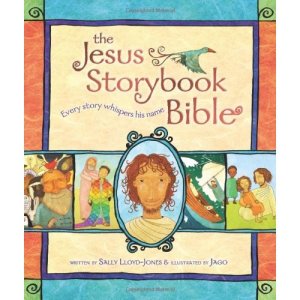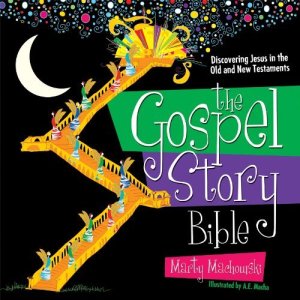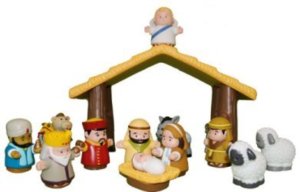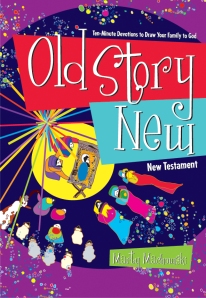Vintage ’73
It has been a little quiet here on the Futon Reformer Blog for quite some time. Part of that is the business of ministry. The other reason I haven’t written much here lately is that I have been writing for the blog Vintage ’73. Vintage ’73 is collaborative blog that focuses on life the Presbyterian Church in America. I have been privledged to write for the site and I would encourage you to go check out their articles. I wrote the most recent article on the site about what we can learn from James K.A. Smith.
Demerits, the Elf on the Shelf, and the meaning of Christmas
A few days ago, I posted a picture of a demerit from my Bible College days. It got a ton of comments and took a bunch of us on a walk down memory lane. The comments were fascinating in showing the different places and perspectives that my contemporaries have gone since leaving our fundamentalist Bible College. In fact, if the demerits were aimed at helping us stay in the fold of fundamentalism, their track record is spotty, at best.
At the same time, since Thanksgiving I have seen a number of post about the Elf on the Shelf. If you are unfamiliar, the Elf on the Shelf is a recently published book (2005) that takes the whole “Santa Claus is Coming to Town” thing to a whole new level. The idea is that you put a small stuffed elf on a shelf or mantle in your house and tell the kids that he is watching for Santa. The elf reports back to Santa his findings and if you are good you get toys, etc. The idea, at first blush, seems innocent enough. After all, Santa already sees you when you are sleeping, whats a creepy little elf going to hurt.
Actually, maybe a lot.
Many Christian parents may gravitate towards the idea of the Elf on the Shelf because it seems like a good way to keep the kids in line. After all, it is tough to have kids behave. I know that more than anyone I know. If I am home alone with my kids, it usually sounds like this, “Guys, guys stop. Hey GUYS, Let’s not do that. Please don’t, seriously. Boys, what?” But when we use something like the Elf on the Shelf, we may be accidentally instilling the wrong ideas in our kids.
When we aim to fix our kids actions,we will miss their hearts.
That was the problem for me and demerits. I was really good at not doing anything that would get me written up. I could check off boxes with the best of them. The problem was that my heart was cold and angry. So all the nice and helpful things I was doing amounted to nothing more than a stench in the nostrils God. Just because we do the right thing, doesn’t mean that we are obeying God. Isaiah gives us a vivid picture of this:
Bring no more vain offerings;
incense is an abomination to me.
New moon and Sabbath and the calling of convocations—
I cannot endure iniquity and solemn assembly.
Your new moons and your appointed feasts
my soul hates;
they have become a burden to me;
I am weary of bearing them.
(Isaiah 1:13-14 ESV)
He is after something more. Christ is after our hearts. This is what Christmas is all about. Jesus gave up all the pleasures of heaven. He left the Father’s right hand and was born in the terrible conditions of a barn and trough. Did he do this because he knew we would do the right thing? No, while we were still enemies of God, he died for us. He pursued our hearts.
So perhaps instead of an Elf on the Shelf this year, maybe we can put a nativity there. And we can tell our kids that God is watching us. He knows if we have been bad or good. And even though we have been bad, gave us the gift of His Son anyway. What if we told our kids they would get presents no matter how naughty they were? What if we went after our kids hearts, not just their behavior.
New Daily Devotional: Heart of the Matter
We all know how difficult it is to take time to spend in private worship. It is incredibly hard to set aside a consistent time to read our Bible. And yet at the same time, we all know how beneficial it is to spend time alone with Christ. Hearing Jesus speak to us through His Word is the delight of the Christian. It is the salve to our souls. It is rest for our weary hearts. And so most of us live on a roller coaster. Knowing how badly we need to spend time with Christ, but struggling to carve out that time.
Through out the history of the church, men and women have written guides to help us with this problem. Some of the oldest Christian literature we have are lectionaries, setting out a daily structure for scripture reading. In the early 1900’s, a twist on the lectionary was born, the devotional book. Oswald Chamber’s My Utmost for His Highest has been one of the most beloved christian books of all time. In recent years, books just like it have become legion.
So what sets Heart of the Matter apart from other daily devotionals?
First of all, the writers of Heart of the Matter are fantastic. From Paul David Tripp to David Powlison, all of the folks from CCEF pitch in. If you are not familiar with these authors, this book is a great way to get familiar with them. Each devotional reading includes a text from scripture and is followed by a mediation signed by the author.
Secondly, having multiple authors helps with monotony. It is easy to get into a rut hearing just one voice. Heart of the Matter is great because each of the authors has their own style. Each day brings a fresh perspective and a fresh voice.
Third, Heart of the Matter is a book that deals with real life. With passages drawn from books like Recovering from Child Abuse, Grief, Depression, I’m Exhausted, Freedom from Resentment, and How People Change; each devotion connects to us where we are. Most devotions avoid any specifics so they can relate to a larger audience. The authors at CCEF know the sins that so easily beset us all and root them out, specifically.
Finally, Heart of the Matter is gospel focused. This is not a collection of guilt ridden passages encouraging you to “try harder”. It is a series of devotions that encourage you to run to Jesus and His cross. This devotional takes very seriously the hideous sin that lies hidden in your heart, and beckons you to run in repentance to your loving father.
I can not recommend this devotional highly enough. You can pick it up through New Growth Press for just under $20. This would make a great gift for Christmas and would be a great way to start the New Year. Or you can win one of two copies we are giving away. Just comment on this post, or share the link on twitter and Facebook. That means you can get up to 3 chances to win. The giveaway will end at midnight next Friday!
Facebook’s New Policies and Your Church
Since the very beginning of Facebook, any change to the site has caused many of it's hundreds of millions of users to get upset. Why do I have to have two profile pictures now? What's with the new layout? Why can't I just go back to the glory days of Facebook, you know 4 years ago before my mom got on here?
In spite of these objections, Facebook continued to grow and has more than a billion users as of last month. That means that roughly 1 in 7 humans has and uses a Facebook account. Recently, you may have noticed a subtle difference in your Newsfeed. Whether you realize it or not, you aren't seeing everything that your friends are posting. Alongside that, if you a a keen observer, you have seen the emergence of posts marked “Sponsored”. This is due to Facebook's new scheme to make money off of you. The new system has been well documented here and here. In short your post are only reaching about 15-20% of your people. Now as a person sharing photos of your cat, it's no big deal if the awkward kid from your college dorm doesn't see it.
But if you are a church or any other ministry that uses Facebook to communicate to your people, this is a game changer.
No longer can people become a fan of your churches page and be guaranteed to receive prayer updates, scheduling changes, and adjustments to Wednesday night's dinner menu. Where Facebook was previously a fantastic way of communicating with your Generation-X and Millenials, now you are only reaching 15-20% of your people. Unless you pay Facebook a hefty fee.
So how can you adjust to this? What are some ways to help maintain your churches presence in social media with your people.
1. Make your churches page into a “Group” page not a “Fan” page. Fan pages are used by people who “like” your church's page. Fan pages are easy to set up and run; they are easy for people to select into by “liking” the page. Groups are a little bit more cumbersome and difficult to run. Typically people have to find the group and ask to join it. Then an administrator must grant them access. However once joined, the group shows up in the persons sidebar (right side of your Facebook homepage) with a small number indicating the amount of activity within the group that they have missed. It also allows you as an administrator to see how many members of the group have seen any given post. This allows you to know what percentage of your people have reached with your message.
2. Heat matters. For whatever reason, things that more people are liking/commenting on/sharring have a higher likelyhood of showing up in other peoples newsfeed. That's why pictures of a political candidate with the caption, “Like if you think this guy won the debate” show up in your news feed all the time. It has 236,982 likes and more comments than that. Encourage your people to “like” and “share” big anouncements and important things.
3. Consider adding a social media budget to your churches financial picture. You have a line item for mailing things out, right? Why not have a “social media” fund, so in the case of a big outreach event or an important announcement, you can pay Facebook to sponsor the post. It's inconvenient. It's not what Facebook used to be. But it is the way things work now. If you have/want ministry involving people under the age of 40, they still use Facebook. Daily.
4. Don't get too comfortable with the way social media works. It will change. Facebook used to be the perfect mix. Tons of users, easy to get your messages out. Now as that is changing and other venues are gaining users, it may be tempting to jump ship to Twitter. Just wait. Twitter already has “Promoted Tweets” and is a company that wants to make money. For better or worse social media is a moving target. For 50 years churches could print up a newsletter and mail it out; perfectly reaching everyone on the list. Social media is not the mail. It is not static. It is changing and evolving. By the time you read this, something in this post will be outdated.
Facebook's policies have changed and there is no longer any free lunch to be had. But really, there never was. Facebook has been and will continue to be a tool to reach people in your church and communicate with them, but it is not the ultimate thing. At the end of the day, social media is no replacement for good, old fashioned shepherding. You know the kind with elders sitting down over a meal to know, feed, lead, and protect the sheep. However you face the evolving world of social media, never leave behind the Biblical mandate to disciple people “in real life”.
Adventures in Family Devotions: Wrap-up
This is the final post in our series on Family Devotions. Today is the last day to comment on the Old Story New post to qualify for a free copy of the book. All comments must be in by midnight (EST).
Just like every child is different, every family is different. There is no magic bullet for family devotions. The best practices are the ones that work for your family. If you check out the comments over at the Old Story New post, you will likely find that you are not alone in your struggles. There is some great encouragement there, it's well worth your time to check it out. In conclusion, this week I thought I would share two ideas that have really helped Angie and me.
The first idea has to do with the church calendar. If you come from an independent church background you may not be familiar with the rhythms of the church year. I would recommend any of Robert Webber's resources, especially Ancient-Future Time. The way we do this is through the last song we sing each evening. For each season of the church year, we sing a different song. So for Advent, Lent, Easter, and Kingdomtide we sing O Come, O Come Immanuel, When I survey the Wondrous Cross, Christ the Lord is Risen Today, and the Lord's prayer. During regular time, we sing the Doxology. This rhythm has been very easy to maintain and has lead to some great teaching times.
The second thing our family has learned is to vary things up. If family devotions are the exact same every night, you and your kids will get tired of them. Keep their attention. Change the format, sing first and do Bible reading second. Change the location, do it in the kids rooms or the living room. We even have “upside-down devotions” some nights. However it works, just keep things a surprise.
Above all, the best family devotions are the ones that you do. Don't jump in and expect utopian kids from the get-go. Start small, a couple times a week
The Jesus Storybook Bible and the Gospel Story Bible
As we continue our look at family devotions, I wanted to take time out to talk about two fantastic resources for your family. Don’t forget that you can win one of two copies of Old Story New by commenting on Monday’s post.
Have you ever wished that somebody would release a product and the next time you turn around there is not one but two? For instance, if a few years ago you wished for a rewrite of Jane Austin to compete with the banal teen paranormal fiction that flooded the shelves, you would have had nothing. Then, BAM, Sense & Sensibility & Sea-Monsters AND Pride & Prejudice & Zombies both hit the market.
For a long time, parents were confined to children’s Bibles that bordered on ridiculous. Whether it was the “Bernstein Bear Bible” or the “Rhyme Time Bible” or any other children’s Bible, they all had several flaws. Some were so concerned with style, or rhyming, that they glossed over the actual point of the Bible Stories. Others did a great job telling the stories of scripture, if your measuring stick for “great job” is turning the stories into Aesop’s Fables. The options were either non-sense or moralism. Parents had to work hard to help the Bible’s along.
 Over the past few years, this has changed. Two new children’s Bibles have been published and both are excellent! The Jesus Storybook Bible and the Gospel Story Bible would both be an asset to any family. The Jesus Storybook Bible is written by Sally Lloyd-Jones and is the product of applying the teachings of Tim Keller and Redeemer Presbyterian Church in New York City to a children’s Bible. The Gospel Story Bible, by Marty Machowski, comes from a Sovereign Grace church near Philadelphia. Both of these books are Christ-centered and look at every story through the lens of redemption.
Over the past few years, this has changed. Two new children’s Bibles have been published and both are excellent! The Jesus Storybook Bible and the Gospel Story Bible would both be an asset to any family. The Jesus Storybook Bible is written by Sally Lloyd-Jones and is the product of applying the teachings of Tim Keller and Redeemer Presbyterian Church in New York City to a children’s Bible. The Gospel Story Bible, by Marty Machowski, comes from a Sovereign Grace church near Philadelphia. Both of these books are Christ-centered and look at every story through the lens of redemption.
The artwork in both books is very different, but very good. Jesus Storybook Bible was illustrated by Jago and features very stylized hand done drawings. Everything is rounded and fun. The colors are slightly muted and the text of the stories flows in with the art. This is particularly beautiful in the rendering of Psalm 23. The artwork in Gospel Story Bible, by A.E. Macha, looks a bit more modern. The colors slightly more vibrant, but the illustrations are limited (by in large) to one page opposite the story on the facing page.
The books are both meant for children, though each has strengths for different age groups. The Jesus Storybook Bible is more poetic in the way that it tells stories. It’s not singsongy like a Dr. Suess book, but it does compact a lot of meaning into a few words. It also spreads the stories out onto multiple pages. This is a big deal for parents of preschoolers. Turning pages is very important. On the other hand, The Gospel Story Bible takes time to explain many of the whys behind the stories. For instance, the story of Jesus washing his disciples feet includes a paragraph on the role of servants. Each of the stories is on a single page with an illustration on the facing page. There is far more to each story when compared to the Jesus Storybook Bible, but no page turning. Overall, the page turning and language of the Jesus Storybook Bible lends itself to preschoolers and the depth of each story in the Gospel Story Bible favors middle elementary school children.
Both of these books are reformed, Christ-centered, and gospel-focused. You can’t go wrong with the content of either.
 The Gospel Story Bible is setup in 156 stories with 78 of those coming from each testament. The idea would be to study each story for a week, using the devotionals that correspond to the Bible. This means your family could spend 18 months in the Old and New Testaments. The Jesus Storybook Bible is setup more like a traditional children’s Bible. It includes the “greatest hits” for kids; stories like Jonah, Namaan, and David. It only has 44 lessons, divided evenly between the Old and New Testaments. If you spent a week on each story, you could complete the entire cycle in just under a year.
The Gospel Story Bible is setup in 156 stories with 78 of those coming from each testament. The idea would be to study each story for a week, using the devotionals that correspond to the Bible. This means your family could spend 18 months in the Old and New Testaments. The Jesus Storybook Bible is setup more like a traditional children’s Bible. It includes the “greatest hits” for kids; stories like Jonah, Namaan, and David. It only has 44 lessons, divided evenly between the Old and New Testaments. If you spent a week on each story, you could complete the entire cycle in just under a year.
So what do these two books cost? The Jesus Storybook Bible can be had for around $10 from a variety of online retailers. The Gospel Story Bible is a little pricier, selling for around $20 with the publisher having as good a deal as anyone.
So which of these two great Bibles are best for your family? The simple answer is the one you will read. If you prefer one, great! If you are still looking for something to tip the scales, I would point to the age of your children. If your kids are in preschool, go with the Jesus Storybook Bible. If you have older children, you should consider the Gospel Story Bible.
Adventures in Family Devotions: Old Story New
Last week, I wrote about my first experience with Family Devotions and some of my failures. Today, I would like to share a new book written to help folks like me.
If you have been reading along with the post last week, you know that my experience with family worship has been a pendulum between big ideals and difficult implementation. I get the feeling that most regular people like us struggle with this. Unless you are a super-parent or have angelic children, family devotions are hard. That probably bears repeating, because it is encouraging to remember that it is a struggle for others.
There is no silver bullet that will make kids sit quietly at night. There is no magic potion which will make your 4 year old engage with you and the Bible each evening. Corralling all the kids before the earliest of bedtimes can be a tough task. Thankfully there is a new resource to help out parents like us. With kids like ours.
Marty Machowski is a pastor who is the author of the Gospel Story Bible. Along with this he has helped to design a 3 year curriculum based on the Gospel Story Bible. Last year New Growth Press released Long Story Short, the Old Testament companion to Old Story New.
Old Story New corresponds to the 78 New Testament stories of the Gospel Story Bible. Each story has 5 evenings worth of lessons (which easily correspond to school-nights) in Old Story New. These nightly lessons are not overly long or complex. Each week contains a sort of rhythm that goes like this:
- Sunday: The story of the week is introduced. There are vivid modern stories and illustrations that help your kids understand the story for the week.
- Monday: There is a short review followed by a chance for your family to dig deeper into the story for the week.
- Tuesday: This lesson always focusses on connecting the story to the gospel of Jesus Christ.
- Wednesday: This lesson is similar to Tuesday, exploring the passage. But each week there is a prompt for the kids to ask the parents a question about how the story connects to their loves. This is a fantastic exercise.
- Thursday: The final lesson of the week always branches out to the Old Testament to connect the story to the Psalms and Prophets.
Each day also contains questions, with the answers already written in. Additionally, there is a prayer starter every day. This layout and pattern makes it incredibly simple for anyone to begin to have family devotion time with their kids. Even parents who may be young in their faith can use this devotional. It keeps us from accidentally moralizing the stories. By providing answers, it also helps parents stay focussed in pointing their children to Jesus.
Another strength of Old Story New is the connection to the Bible. While the lessons are based in the Gospel Story Bible, the readings each night of from mom and dad’s Bible. This is incredibly important. Most family devotions are either based solely on some sort of children’s Bible, or solely on mom and dad’s Bible. Old Story New is based on the stories out of the companion children’s Bible, but each day has a reading from scripture. This balance is the best part of the devotional. While our children may not understand every word, they can begin at a young age to engage the scriptures. Old Story New gives parents handles for introducing their kids to the Bible.
The book is aimed at elementary aged kids, though there are some helpful tips on adapting it to younger or older children. But it is ideal for a kids in the middle of elementary school (ages 6-10). If your church uses the Gospel Story curriculum, like we do here at Surfside, the devotional is a perfect companion. Students are introduced to the story at church and then through the week look at it again with their parents.
I highly recommend Old Story New for your family. It is an incredible resource and companion to the New Growth Press children’s resources. You can click here to pick up a copy from New Growth Press (cheaper than Amazon!)
Or even better, Get One for Free! Leave a comment here about one of your failures or successes in family devotions; or tell us about the best idea for family worship you have seen. Next Monday, I will randomly select two of the comments and send them a free copy of Old Story New!
Adventures in Family Devotions: (Mis)Adventures and Failures
Next week, I will be featuring a review of the New Growth Press family devotional called, “Old Story New“. Leading up to that, I thought I would share some of my adventures in family devotions. Earlier this week, I wrote about my first experiences with Family Devotions, you can read about it here.
 There is an old Scottish story of a rich young ruler. As he was courting women, he was famous for saying that he had many theories on raising children. Then he got married and started having kids. A few years later a friend asked him how the family was going. The now middle aged Scot replied, “Before I was married I had 4 different theories on raising children. Now I have 4 children and no theories.”
There is an old Scottish story of a rich young ruler. As he was courting women, he was famous for saying that he had many theories on raising children. Then he got married and started having kids. A few years later a friend asked him how the family was going. The now middle aged Scot replied, “Before I was married I had 4 different theories on raising children. Now I have 4 children and no theories.”
When it comes to family devotions, I sometimes feel like this. I had all kinds of ideas and ideals. I had the “Barcott Template” from seminary. I had a children’s Bible, and a heart full of the best intentions. So about the time our oldest son transitioned to a toddler bed, I decided we would start to read a story from the Jesus Storybook Bible. My two year old was unimpressed. I would try to shorten the stories, but he would still not want to listen. One night I can remember calling him up onto my lap to read our story. He obliged after some light bribery. As I tried to read him the most exciting story I could think of, Jonah and the Whale, he was twisting and squirming. I pressed on, reading the story and holding him a little tighter, encouraging him to sit still. This battle of wills ended in my son head-butting me, breaking my glasses. In half.
So we decided to abandoned the story time model. Instead, we began using the Children’s Catechism to work through each night. At first this was great. Our son was taking to it great. Each night we would review the previous questions and work on the newest question. This was all going fantastic until we got to question 30 or so and our son insisted on going through every question, every night. All of the sudden, our nightly family devotional time was stretching to 20 or 30 minutes. And we were just going through the motions of the avalanche of questions and answers.
O yeah, and one time, my son gave me a flying elbow drop in the middle of question 18.
It sure seemed like every idea my wife and I had for family devotions ended in pain and destruction in the most literal sense. We were at the end of our rope, ready to give up on the idea of family devotions.

 It’s Christmas Eve and the madness that accompanies the season is upon us. There are parties and gifts, travel and elves, cookies and milk, and every other thing imaginable.
It’s Christmas Eve and the madness that accompanies the season is upon us. There are parties and gifts, travel and elves, cookies and milk, and every other thing imaginable.

